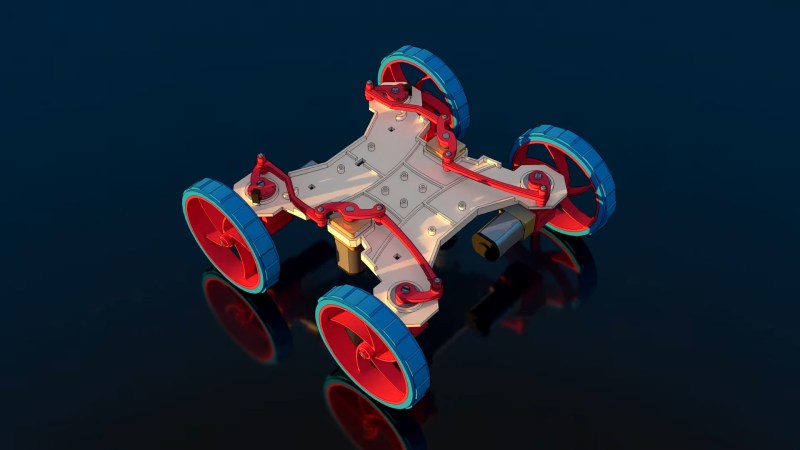
At first glance, you might think the Omnibot v3 wasn’t anything more than a basic 3D printed robotics platform, but you’d be wrong on both counts. There’s actually no 3D printed parts on the build, and while you could describe the platform as simplistic, calling it basic certainly doesn’t do the clever design justice. In the video after the break, creator [Michal] takes us through the process of designing and building this high quality bot.
The build starts with huge amounts of time and effort in a CAD program designing the Omnibot v3 with its four wheel steering and ability to do fancy things like spin in place. With the CAD and 3D renders out of the way, the process of transforming the digital into the physical began with a CNC router.
 Rather than routing the individual components out of a suitable material, [Michal] cut forms. Those forms were made only for the creation of silicon molds. Those silicon molds where then used to pour the actual parts with polyurethane resin. It is these resin parts that make up the actual Omnibot v3, which is manually demonstrated at the end of the video.
Rather than routing the individual components out of a suitable material, [Michal] cut forms. Those forms were made only for the creation of silicon molds. Those silicon molds where then used to pour the actual parts with polyurethane resin. It is these resin parts that make up the actual Omnibot v3, which is manually demonstrated at the end of the video.
All in all, it’s a neat project with a neat process. If we were to stop here, things would be mostly complete and you’d click on to the next great Hackaday article. But there’s more to be had here. You see, [Michal] is also fellow behind the Guerrilla guide to CNC and resin casting. In his own words: “CNC machining and resin casting are an underappreciated method for producing engineering-grade parts, but the process is fast, predictable, and garage-friendly.” After seeing the results, we can’t help but to agree.
By the way, before anybody in the comments can yells “DUPE!”, we already know. You see, we featured the Guerrilla guide to CNC and resin casting once before, almost exactly 11.5 years ago! It’s been updated since then, and appears to be an absolute gold mine of information for anybody wanting to walk in [Michal]’s shoes.
0 Commentaires